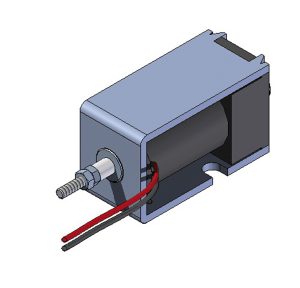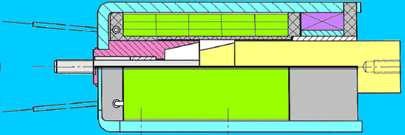
It is the electromagnet that has the greatest number of possibilities of adaptation at the lowest price, explains Binder Magnetic in an interesting blog on their website!
Its operation is clever and energy efficient:

Functioning:
Attraction of the nucleus in the electromagnet: When powering up, the kernel (in yellow) is attracted by the field created by the coil (in green)
When the core arrives at the contact of the cylinder head (in pink) and in the absence of current, maintaining this nucleus in this position will be ensured by an internal permanent magnet (in purple).
Release and return of the kernel outwards: To take off the core and again allow its output, it will then just need to reverse the power polarity. In fact, the electromagnetic field thus created will then be reversed to that of the permanent magnet, and thus come to cancel it. In this situation, the nucleus becomes free again and is no longer retained in the electromagnet.
Equipped with a spring this MONOSTABLE electromagnet can be considered as bistable, because there will be 2 stable positions: the nucleus will be maintained on one side of the race by the magnet, and on the other by the spring.
This electro-magnet will, moreover, be much cheaper than a real bistable that will have two reels.
Concretely, a single impulse allows the operation of the core in one direction or the other with a maintenance at the end of the race, a current consumption of very low duration, a maximum force and a heating of the minimum coil.
Binder Magnetic’s commercial engineers can further advise you. Binder Magnetic is a French company specializing the in research and development of transmissions technologies. For more information see www.binder-magnetic.com



